Galleries
‘It’s Like Putting on Someone Else’s Jacket, and It Fits’: David Zwirner’s Paris Branch Is Open for Business, With a Bang
The space was once the gallery of famed French dealer Yvon Lambert.
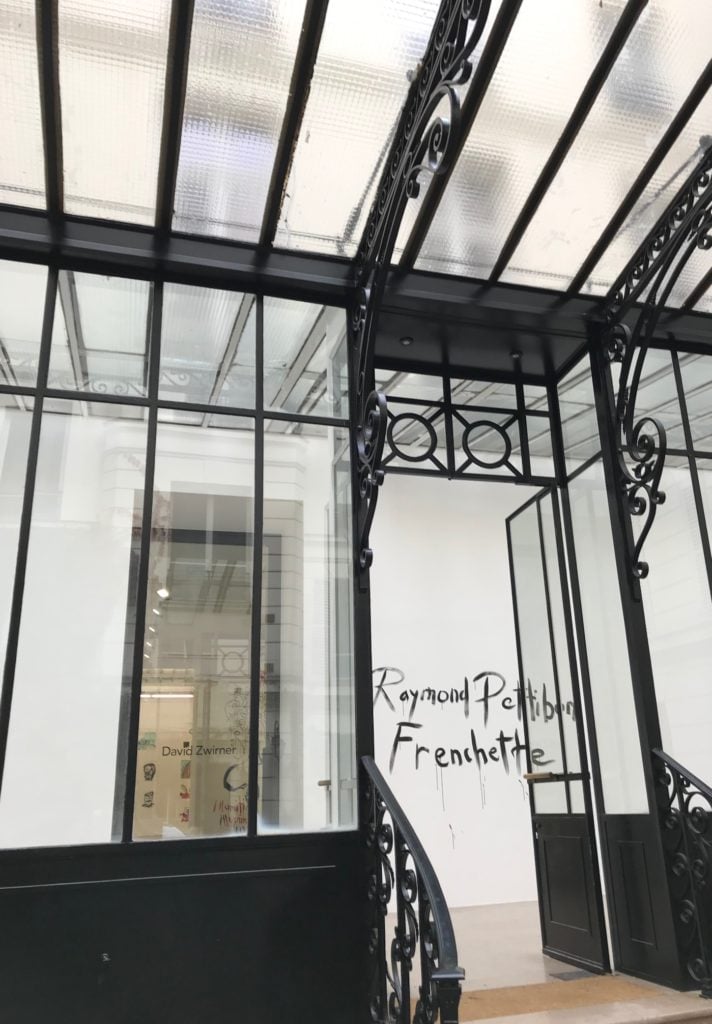
The space was once the gallery of famed French dealer Yvon Lambert.

Nate Freeman

On Tuesday morning in Le Marais, the chic neighborhood in the 3rd arrondissement of Paris, the latest outpost of the David Zwirner empire opened its doors to a select few clients and insiders.
These lucky few stepped off Rue Vieille du Temple and through a large iron gate where a spacious, stately courtyard emerged, and into a spiffy new gallery space with Zwirner’s name freshly appended to the door.
The place was a veritable hive of activity. London director Angela Choon breezed by on the phone screaming, “Just buy it, it’s beautiful!” Hong Kong director Leo Xu led a group of Asian collectors into a back room full of primo works by gallery artists Carol Bove, Alice Neel, and Richard Serra. Xu’s group nearly knocked into a band of European collectors led by partner David Leiber. Caterers fluttered about with coffees and frazzled assistants whipped by holding two phones in one hand. And in the guts of the building, a dozen or so sales associates sat tapping away on laptops, ready to offload works.
“We are already fully operational,” Paris director Victoire de Pourtalès told me, standing in one of the private showrooms.
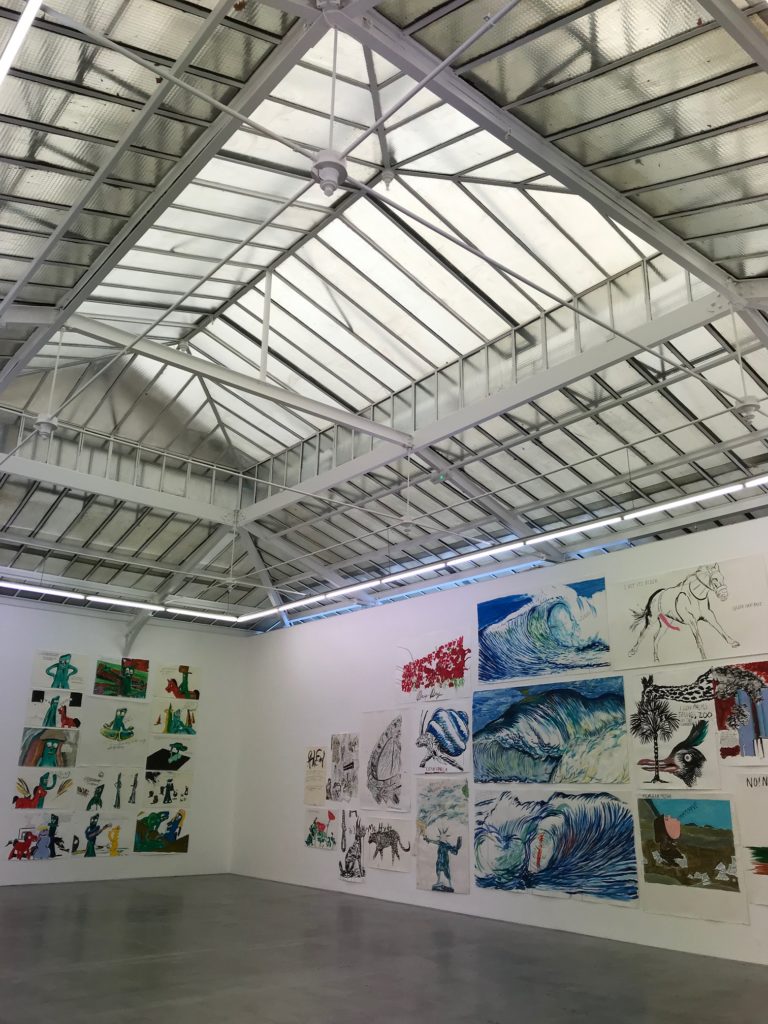
Installation show of “Raymond Pettibon: Frenchette.” Photo: Nate Freeman.
To be fully operational that quick, de Pourtalès managed a pretty gnarly turnaround—until this summer, she was running the previous occupant of the gallery, VNH Gallery, and now heads up the Zwirner Paris spot with Justine Durrett, a gallery vet called in from New York. VNH closed at the end of July, and in just a few months, the space morphed into an instantly recognizable Zwirner space, with all the bells and whistles of its other branches. (The floor, for example, is the exact same color as the gallery in New York, which a rep insists is a coincidence).
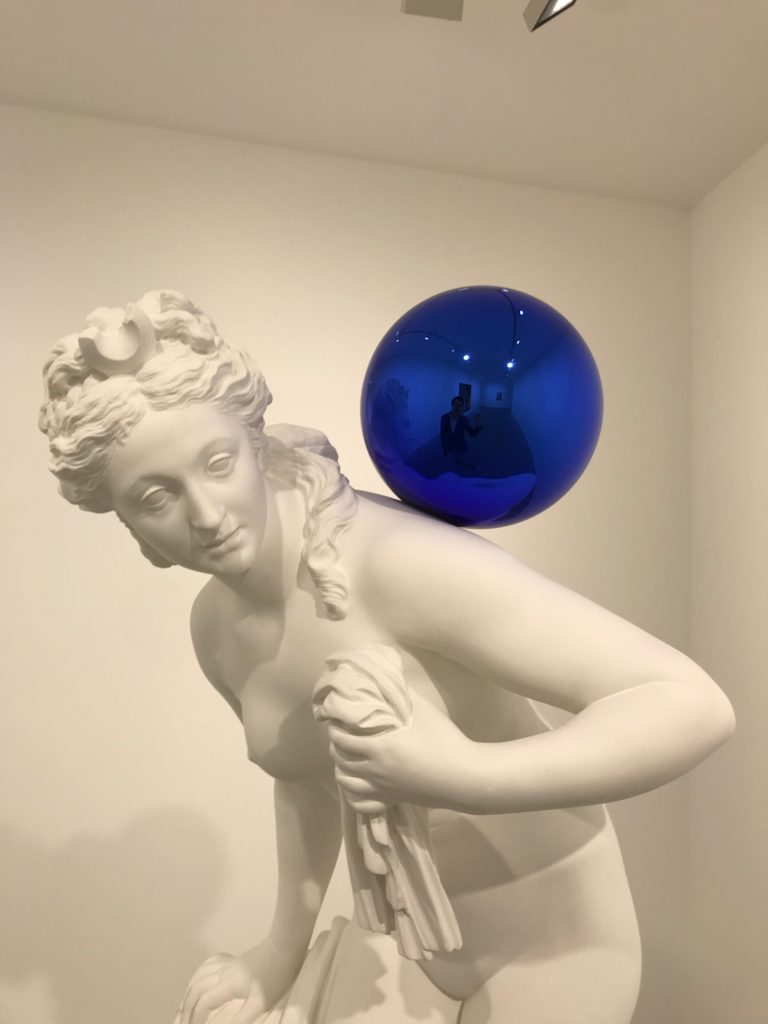
A Jeff Koons Gazing Ball statue. Photo: Nate Freeman.
The tight deadline was due in part to the desire to open during the third week in October, when the art world gathers in the City of Light for FIAC, but also because of another pressing matter: the seeming inevitability of Brexit, which is scheduled for October 31. As David Zwirner said when the Paris gallery was announced: “Brexit changes the game. After October, my London gallery will be a British gallery, not a European one.”
The move was a canny one: in the months after it was announced, White Cube said it would also open in Paris, though with an office and viewing room. Pace is looking for a space as well. There are rumors that Hauser & Wirth will follow—the logic being that, once Brexit happens, its only EU gallery will be in Menorca, which is too remote to be a major art-world hub.
But there’s also the pure appeal of Paris, its aura of sex long an intoxicant for moneyed Americans, and its history as a global capital of culture. And the convenience of finding a soon-to-be-defunct gallery in a prime space in the Marais, absorbing its director and staff, and turning it into a Zwirner branch was too much to let pass.
What’s more, the space has some real art-historical bonafides: before it was VNH, it housed Yvon Lambert’s legendary gallery, where Conceptual art legends Carl Andre and Lawrence Weiner had early Paris shows. As Zwirner said during a preview Monday (as relayed to me via a rep: “It’s like putting on someone else’s jacket, and it fits.”
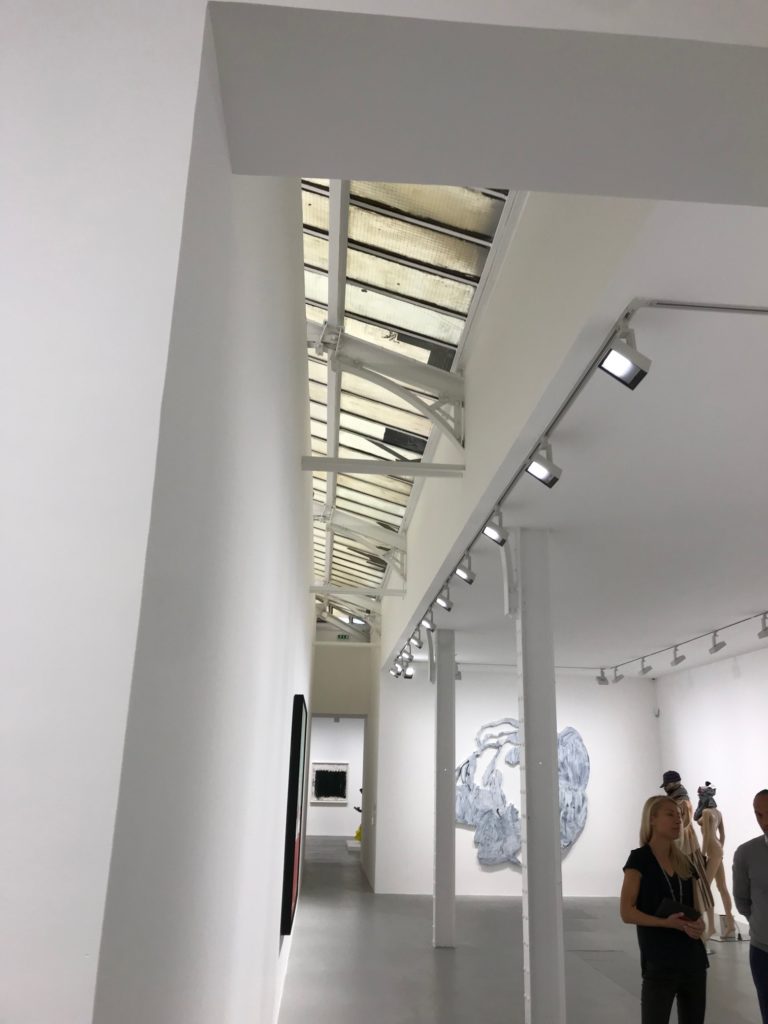
The interior of the gallery. Photo: Nate Freeman.
Intriguingly, the first show is new work not by one of the gallery’s many European artists, but by Raymond Pettibon, the illustrator who came up in the Los Angeles punk scene in the ’80s and is now known for his large-scale drawings of surfer-dude waves, baseball diamonds, and scabrously political caricatures.
They works are installed, salon style, in the large soaring main space, with the gigantic rendering of blue waves acting as showstoppers. But better yet are the caricatures, which skewer longstanding targets of hippie opprobrium such as Nancy Reagan, Joseph Stalin and Adolf Hitler. Occasionally, there are more loving caricatures, including poignant portraits of Pettibon’s spiritual soulmates, such as Martin Kippenberger and the late Anthony Bourdain.
“The first show with Raymond is such a great idea,” de Pourtalès said. “He’s such an interesting character, and this space, it’s so right. The caricature is so much part of the culture here in Paris.”
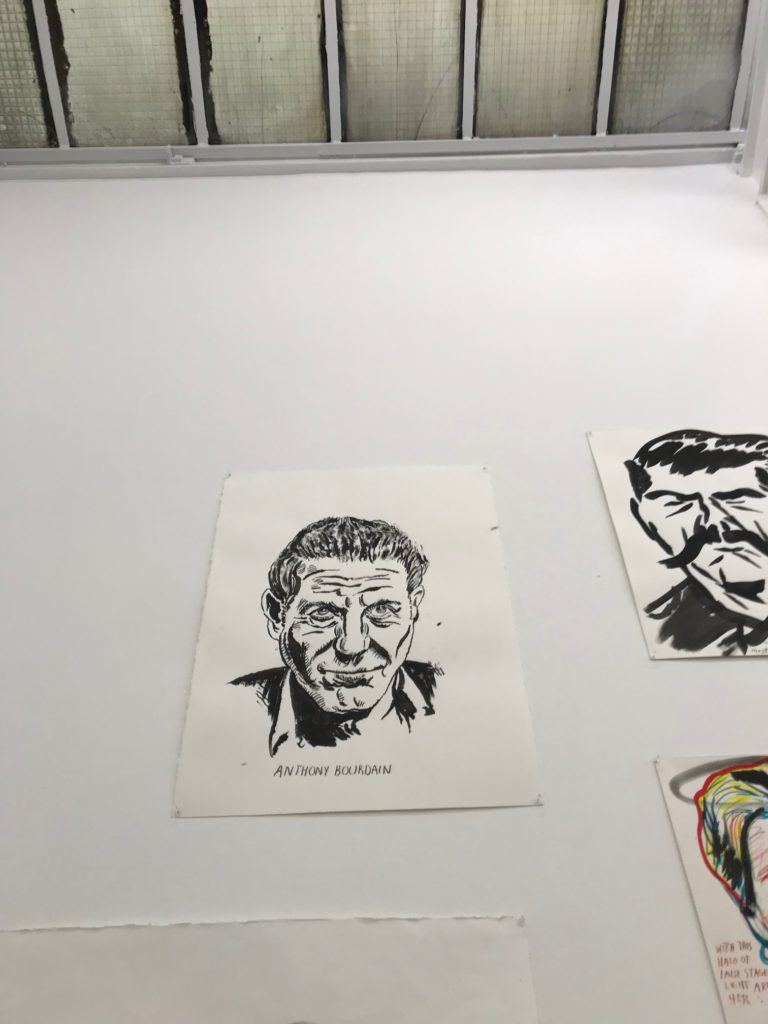
Pettibon’s portrait of Anthony Bourdain. Photo: Nate Freeman.
There’s certainly a pretty penny to be made from the Pettibon works. Last week, advisors said they were being offered the large wave paintings for $1.2 million a pop, with several of them spoken for. But the gallery’s real red meat is in the ancillary gallery spaces that run from one side of the building and into the back. De Pourtalès said that the gallery’s artists were asked to make new work to inaugurate the space, and there are freshly made paintings by Josh Smith, Harold Ancart, Oscar Murillo, and Lisa Yuskavage lining the walls. According to a price list left in one of the galleries, all of those are on reserve already (the day before the gallery opens!) and priced in the mid six-figures.
“Most of the artists came to the opening, and we really want them to be interested in the Paris space,” de Pourtalès said.
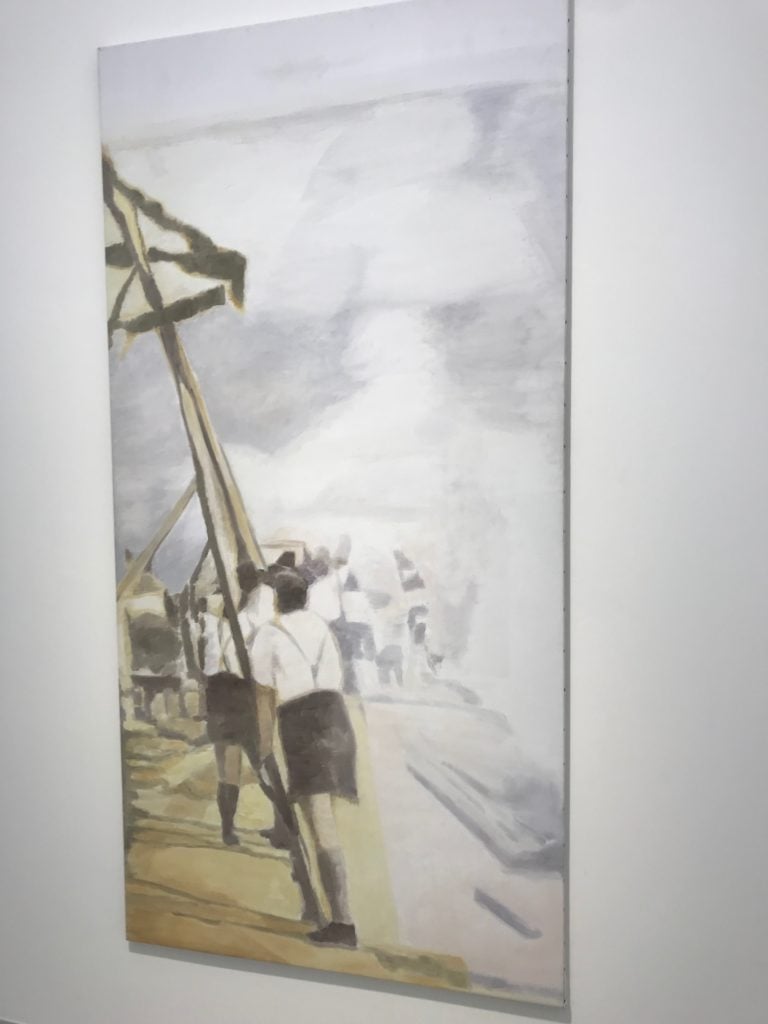
A painting by Luc Tuymans that is on reserve for $2.5 million. Photo: Nate Freeman.
And the gallery is also successfully moving some older inventory. Yayoi Kusama’s INFINITY NETS (KOZPP) (2017) is priced at $2 million and on reserve, as is Maypole, a 2000 painting by Luc Tuymans, priced at $2.5 million. Not yet snapped up (as of Tuesday afternoon, that is) are a Jeff Koons gazing ball sculpture, Gazing Ball (Diana) (2013), priced at $2.8 million, and a large Yuskavage painting, The Big Pileup (2015), on sale for $1.2 million.
De Pourtalès said that, while the space will be an important venue for its artists to debut new work, it will also become the de facto European headquarters for the gallery. And given the dueling crises facing Hong Kong and London, Paris may soon become the city that comes after New York in terms of prominence for the gallery.
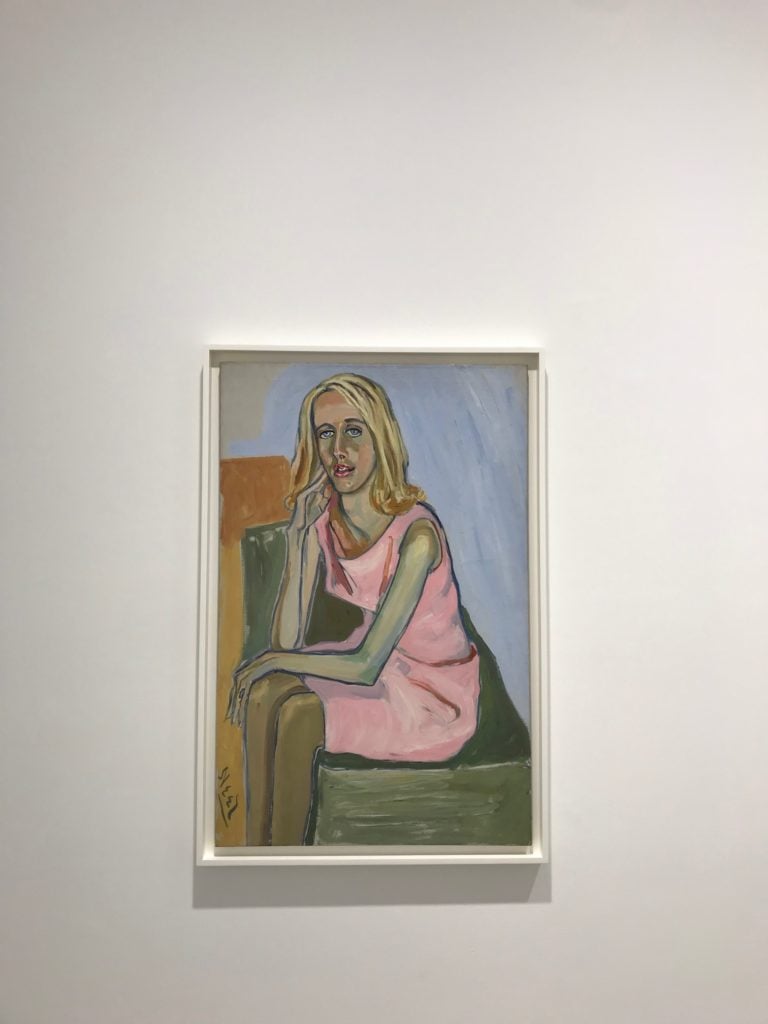
Alice Neel’s portrait of Kristen Walker from 1964. It is on reserve, priced at $750,000. Photo: Nate Freeman.
“David’s very happy with the London space, but with what’s happening, it will be the only gallery he’ll have in Europe,” de Pourtalès said. “We’re going to be able to do secondary market business, but we’ll see how it goes—it needs to be very organic and instinctive.”
To that end, the next show will of be historical work by Dan Flavin, which not only strengthens the secondary market status of the gallery, but also echoes back to the ghosts of the gallery’s past—Yvon Lambert showed Flavin as early as 1974.
“Yvon had this kind of minimal idea of a program, which David is very interested in as well,” de Pourtalès said.